Posts Tagged: thousand cankers disease
UC Davis Students Carry on Legacy of Walnut Twig Beetle Expert Steve Seybold
The legacy of chemical ecologist Steven Seybold thrives with the recent publication of two papers by two of his UC Davis...
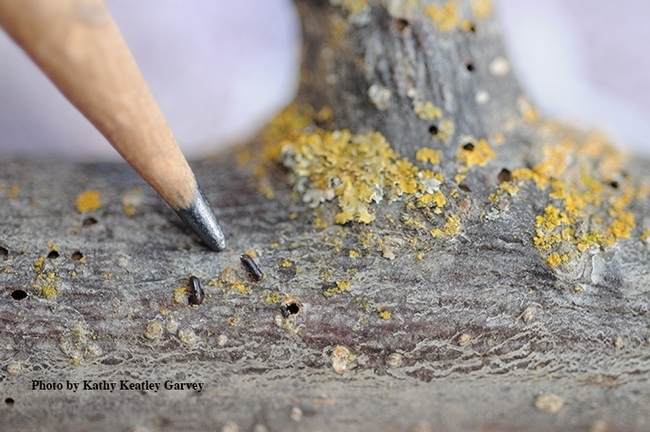
The walnut twig beetle, Pityophthorus juglandis, in association with a fungus, causes the thousand cankers disease. (Photo by Kathy Keatley Garvey)
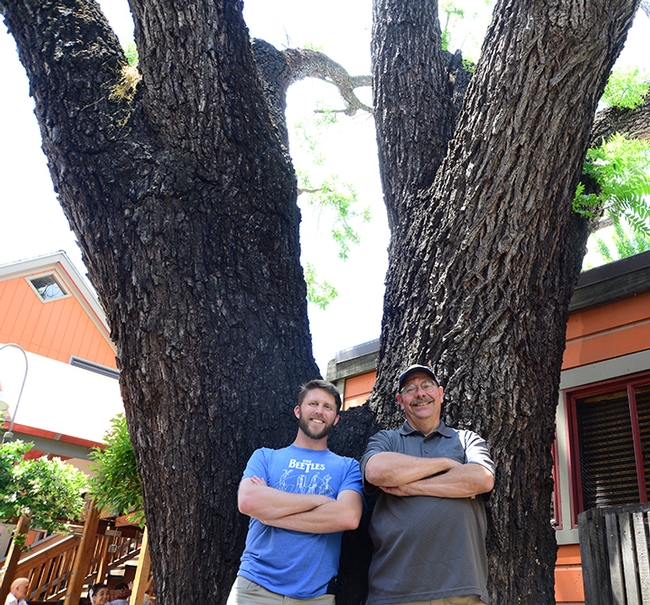
Forest entomologist Jackson Audley (left) with his mentor, the late Steve Seybold, in front of an infested tree in Davis, Calif. The walnut twig beetle, in association with a fungus, causes thousand cankers disease. (Photo by Kathy Keatley Garvey)
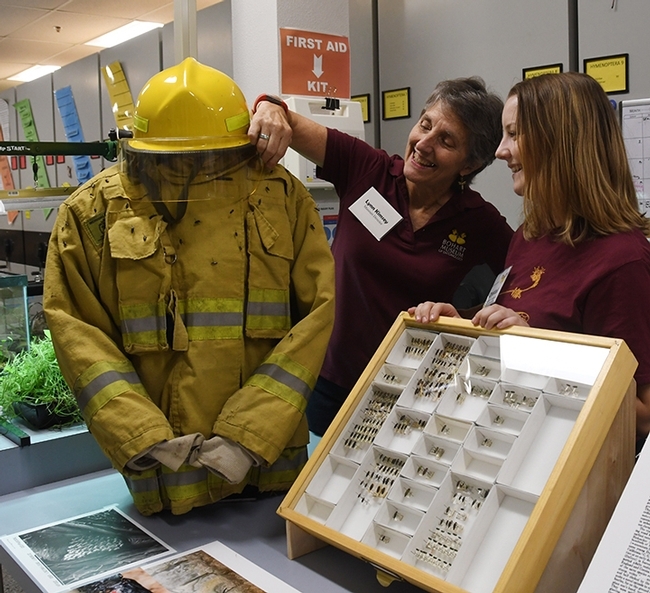
UC Davis doctoral student Crystal Homicz (right) participating in a forest entomology open house at the Bohart Museum of Entomology. With her is Professor Lynn Kimsey, director of the Bohart. (Photo by Kathy Keatley Garvey)
Jackson Audley: Targeting the Walnut Twig Beetle
Doctoral candidate and forest entomologist Jackson Audley of the UC Davis Department of Entomology and Nematology, targets an invasive bark beetle...
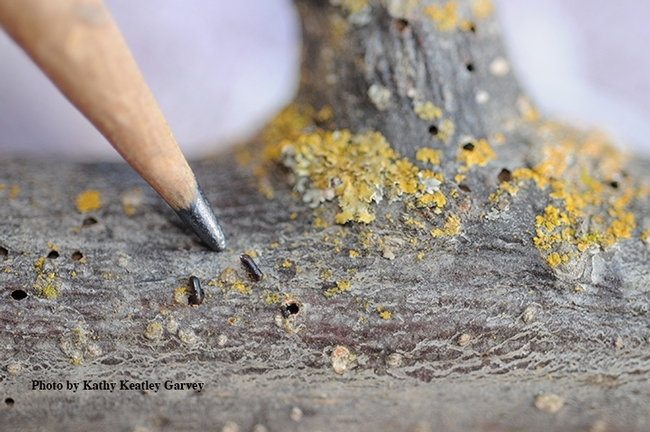
The walnut twig beetle is about the size of a grain of rice. In association with the fungus, Geosmithia morbida, it causes the insect-pathogen complex known as "thousand cankers disease." (Photo by Kathy Keatley Garvey)
Forest Entomologist/Chemical Ecologist Steven Seybold: 1959-2019
We are all saddened by the death of noted forest entomologist and chemical ecologist Steven Jon Seybold, a lecturer and researcher with the UC Davis...
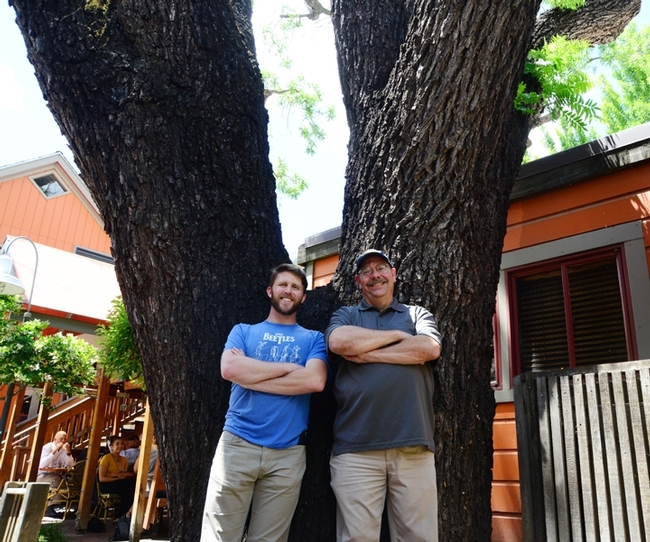
Forest entomologist and chemical ecologist Steve Seybold and doctoral student Jackson Audley by a downtown Davis tree with thousand cankers disease. (Photo by Kathy Keatley Garvey)
Jackson Audley: A Case Study with the Walnut Twig Beetle
So tiny and so destructive. It's about the size of a grain of rice but it's a killer. That's the walnut twig beetle, Pityophthorus juglandis, which...
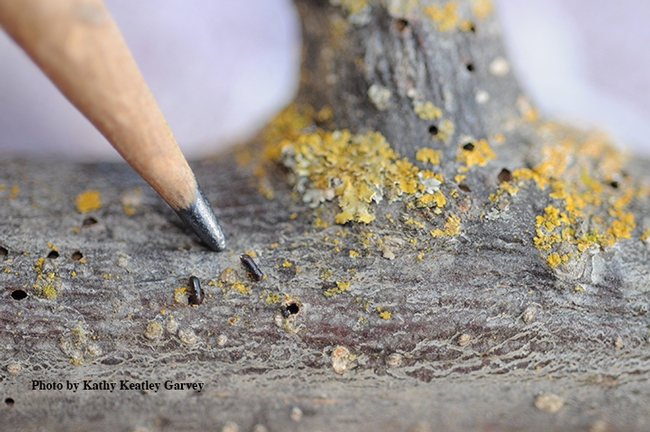
The walnut twig beetle is about the size of a grain of rice. (Photo by Kathy Keatley Garvey)
Thousand cankers disease in Central Valley
UC Cooperative Extension orchard systems farm advisor Elizabeth Fichtner believes farmers should monitor their walnut orchards for signs of thousand cankers disease. Infected trees, she says, should be cut down and burned.Thousand cankers disease has been threatening black walnut trees in 15 California counties for several years; six infected trees were found in Tulare County since last year, according to an article in the Visalia Times-Delta. Fichtner said she began finding the disease in Fresno County a couple of weeks ago.
The fungus has also been found in Arizona, New Mexico, Colorado, Idaho, Oregon, Utah and Washington state. It was detected in Tennessee in July.
"We really don't know where it came from," the article quoted UC Davis entomologist Lynn Kimsey.
Fichtner said the disease is spread by the walnut twig beetle, which burrows below the bark to make spaces to breed. The fungus spores are carried on their bodies when they enter the tree.
The first symptoms are the cankers, each with a tiny beetle burrow hole at the center. Later leaves yellow and branches die. Because there are no known treatments for the fungus, eventually it kills infected trees.
On the bright side, one infected tree doesn't mean the whole orchard will succumb. Fichtner told the reporter that the walnut twig beetle produces an aggregation pheromone, so all of the beetles tend to attack one tree.
Nevertheless, research entomologist Steve Seybold of the USDA Forest Service Pacific Southwest Research Station said the disease is pervasive in many California cities and towns.
"I really don't see much hope for combating this disease," Seybold was quoted.
More information about thousand cankers disease is on the UC Davis Department of Entomology website.
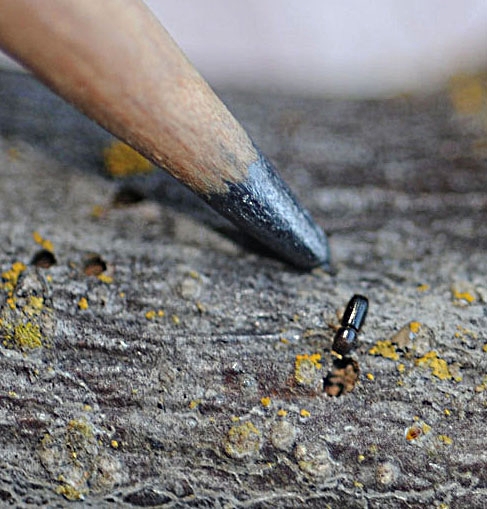
Walnut twig beetles carry the deadly fungus into trees. (Photo by Kathy Garvey)

